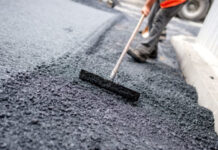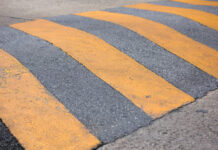You may have seen all the parallel grooves running through the pavement when driving along a remarkably smooth highway. It is the result of effective concrete milling that those grooves in the concrete are visible.
Concrete milling is the process of removing layers of concrete from road surfaces, bridges, parking lots, and other paved surfaces in order to create a smooth surface with an excellent grip.
Though milled concrete surfaces are finished and level, they do require frequent 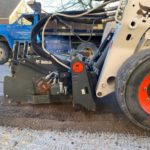 maintenance to ensure that they remain safe and well-maintained for the course of their service life. This maintenance is also carried out to ensure that concrete surfaces — such as roads, bridges, walkways, and other similar structures — meet all applicable safety codes and construction standards.
maintenance to ensure that they remain safe and well-maintained for the course of their service life. This maintenance is also carried out to ensure that concrete surfaces — such as roads, bridges, walkways, and other similar structures — meet all applicable safety codes and construction standards.
A large amount of equipment is used in the concrete milling process, from the start of the process through the completion of maintenance tasks. Keep in mind that such pieces of machinery are not all the same — they vary in terms of size, functionality, purpose, and workload capacity.
Continue reading to gain a better understanding of the concrete milling process — including its purpose, how it looks like, and tips to get the best results:
What is the purpose of concrete milling?
Concrete milling is carried out to correct irregularities in concrete and ensure a smooth, flat surface that provides plenty of traction.
Irregular or uneven surfaces can be hazardous for vehicles and pedestrians. They can cause trip hazards as well as poor traction and other problems. Milling helps restore smooth concrete surfaces, which helps to avoid previously mentioned safety hazards.
Besides improving the functionality of concrete surfaces for vehicles, concrete milling also helps reduce the conditions that lead to screeching tire noises, which can be damaging to tires. This results in a more pleasant driving experience.
Concrete milling is not only helpful to road safety, but it is also an excellent way of improving the aesthetic appeal of concrete surfaces. Through milling, you can improve the appearance of the upper surface layers and make them more pleasing to look at.
Concrete milling can also help you complete resurfacing work with minimal waste! The process of concrete milling also helps create reclaimed pavement materials. You can then repurpose this reclaimed waste product as aggregate for new pavement, which is both cost-effective and ecologically beneficial.
What does the milling process look like?
Concrete milling machines work by chipping away at the top layer of a concrete surface using diamond-tipped blades mounted to a spinning drum. These machines are helpful in 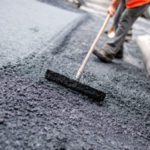 heavy-duty concrete resurfacing activities, such as those requiring chipping away a significant amount of surface material.
heavy-duty concrete resurfacing activities, such as those requiring chipping away a significant amount of surface material.
Concrete milling machines dig pretty deep into the concrete, scraping away up to a quarter of an inch of the surface per pass. As a result, they are beneficial for outdoor construction projects such as bridge or construction and repair or parking garage, sidewalk and driveway resurfacing.
These projects generally entail creating traction grooves in concrete or leveling uneven surfaces to eliminate trip hazards.
How to get the best milling results?
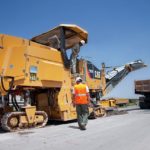 It is important to work at an efficient pace while still maintaining a high level of quality control. While it is important to work fast, it is just as important to remember that rushing through the job could lower work quality and even pose safety risks.
It is important to work at an efficient pace while still maintaining a high level of quality control. While it is important to work fast, it is just as important to remember that rushing through the job could lower work quality and even pose safety risks.
We also recommend choosing a milling machine ideal for your project’s workload. With a single machine that can perform both diamond milling and scarify, you can significantly increase the efficiency of your concrete surface preparation, resulting in substantial savings in time and money.
Address
Commonwealth Paving, 136 Outerloop, Louisville, Kentucky 40214
Phone: 502-459-7283, Fax: 502-456-2678
Opening Hours
| Monday | 9:00 AM – 5:00 PM |
| Tuesday | 9:00 AM – 5:00 PM |
| Wednesday | 9:00 AM – 5:00 PM |
| Thursday | 9:00 AM – 5:00 PM |
| Friday | 9:00 AM – 5:00 PM |
| Saturday | Closed |
| Sunday | Closed |





